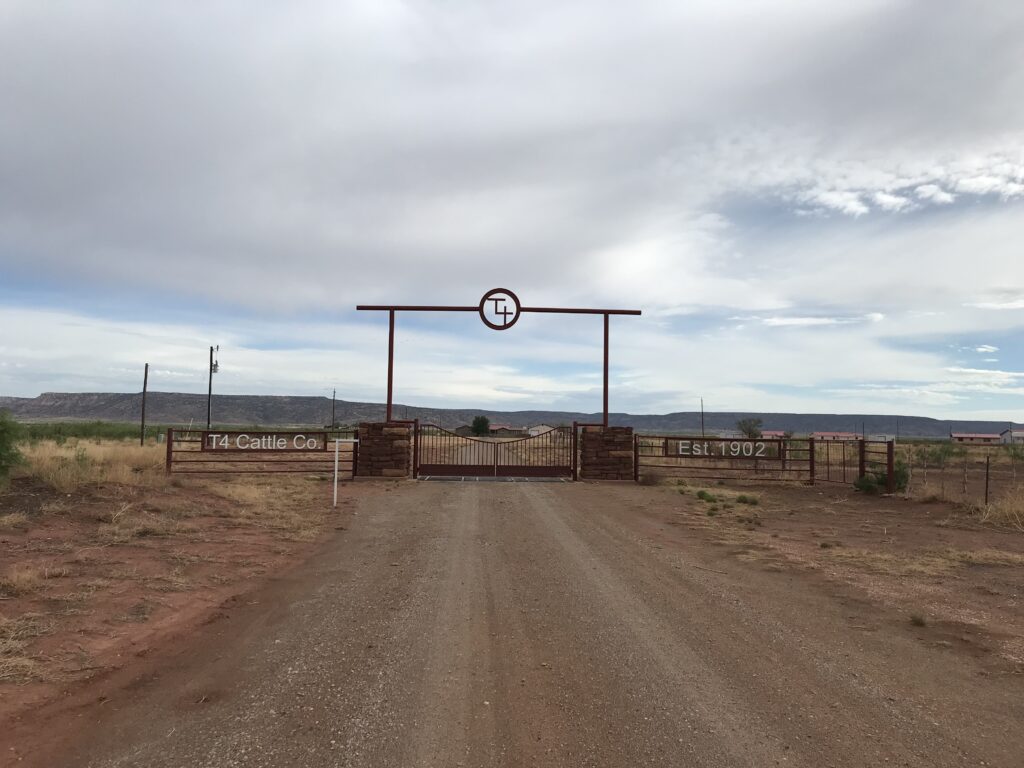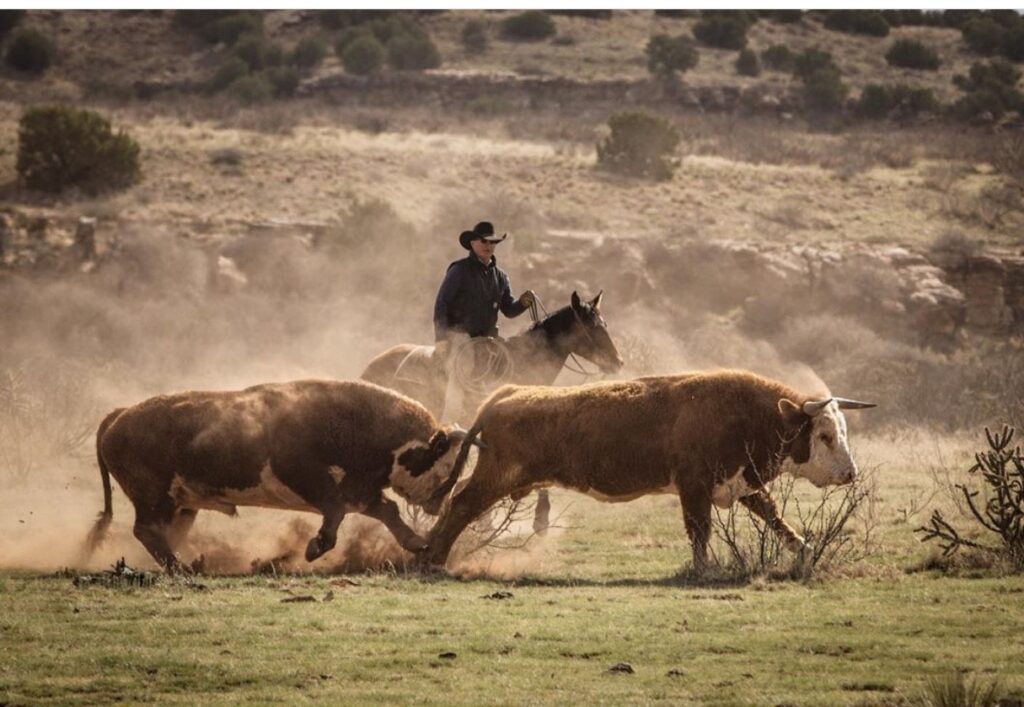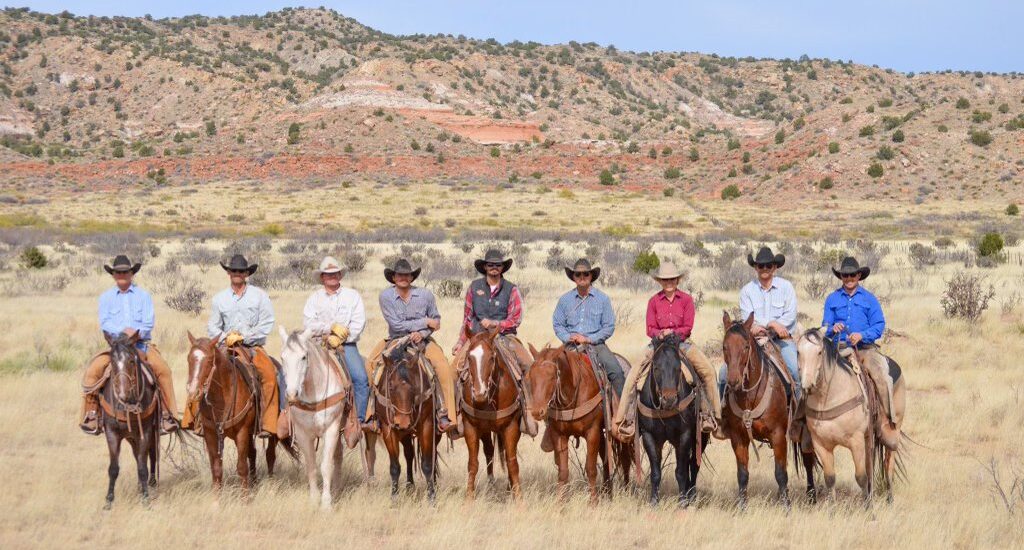The T4 Ranch | Stewards of the Land
The T4, located in northeastern New Mexico, is synonymous with ranching heritage. Owned by the same family for going on six generations, its commitment to conservation has been in effect long before conservation was even a buzzword.
How it Started
Yetta Goldsmith Kohn, a widow, arrived in Montoya, New Mexico, in 1902 with four children in tow and claimed through the Homestead Act the original piece of land that would one day become the T4. The family operated a mercantile store as well as running what they then called Kohns Cattle Co. In 1915, the Kohn family bought some cattle with a T4 brand and acquired the brand as part of the deal.
Yetta Kohn’s eldest son Howard was the next generation to operate the ranch, but he passed away and his widow Clara, remarried Dr. Thomas Hoover. They continued to operate the T4 until Clara’s daughter, Yetta, named after her grandmother, was grown and married to Philip Bidegain.
The Bidegains then became the managers of the ranch, and they were the first of the family to register horses with the American Quarter Horse Association in 1950.
Philip and Yetta’s son, Phil, along with his wife Laurie, were the next generation to take over and are still involved today. Their sons, Scott and Donnie, are managers. Scott oversees the ranching portion and Donnie oversees the farming.

“There aren’t many big places that have stayed together for as long as this outfit has,” says T4 cowboss Bryan Clark. “And there are no oil wells or wind towers, it’s all cattle and horses. That’s pretty unique.”
He continues, “I absolutely think it’s because of the family, they’ve always used this ranch for the hard times instead of the good times. They could probably run more cattle than they do, but if we hit four or five droughty years, we can still be in the cow business while others aren’t. All because they are stewards of the land.”
How It’s Going
The ranch now encompasses nearly 200,000 acres in eastern New Mexico between Tucumcari and Santa Rosa. Clark describes it as desert country with some mesas and says it’s not unusual to have elevation changes of 1,000 feet in one pasture. The operation runs about 2,000 cows, consisting of some spring calvers and some fall calvers, as well as two registered herds: one Black Angus and one Hereford.
Bryan oversees the cattle operation which consists of five camps, all with their own campman in charge of that part of the ranch, as well as a cowboy who lives at headquarters and some employees responsible for maintenance. Bryan’s wife, Kimberle, is also part of the crew, and does the bookkeeping and cooking.
The registered herds are mainly for their own use, but the ranch does always have bulls for sale through private treaty. Decades upon decades of selecting cattle that work in the tough environment have created ideal cattle suited for the ranch. Raising their own bulls and replacement heifers just makes sense. Herefords have been a mainstay on the ranch, but in more recent times, Scott Bidegain has added Black Angus. Although Angus is much more popular, Bryan says they will definitely keep the Herefords around.
“We really like this Hereford influence,” he says. “The bulls travel better and use the country more, and they are good doers.”
The commercial calves are sold in a variety of ways. Sometimes ownership is retained through the feed yard, or if there’s wheat in the Texas panhandle, spring-born calves may be sent there for added pounds. Typically, each year the fall calves are stripped and shipped directly to a grower/feed yard in Tucumcari then sold at the end of the summer.
“When we have enough grass, we will wean all the spring heifer calves and leave them at the ranch,” Bryan says.
They spend the winter there growing or at least maintaining and then replacements are sorted off in the spring.
Bryan emphasizes that all ranch work is done horseback. Even sorting replacement heifers is done in the pasture.
“Instead of how some people put them in an alley and sort them,” Bryan says, “we just throw them in a corner of the pasture, ease them around and pick out ones we like.”
As such, a good horse is critical.
T4 raises its own American Quarter Horses for ranch use and currently has about 20 broodmares they breed to three stallions: one son of High Brow CD, a son of Docs Stylish Oak and a son of Metallic Cat. Ranch-raised mares comprise most of the broodmare and are primarily granddaughters of Shorty Lena, Young Gun and Capital Letters.

Fillies are offered for sale, but usually, all the colts are run together until they’re 2-year-olds and divvied out to the ranch cowboys.
“Everybody that works for the ranch and wants a young horse gets one and is responsible for starting and making him,” Bryan says. “We are proud of these horses and I think all the guys really like them.”
Some use T4-raised horses on their WRCA ranch rodeo team.
“Ranch rodeoing is a great way for the ranch cowboys to get together for some fun,” Bryan says. “It’s good camaraderie and a good little getaway too.”
The cowboys mostly work alone except during spring and fall works, so it’s nice to spend time together and see old buddies.
The T4 team consists of Scott Bidegain (ranch manager and one of the heirs of the original family), Bryan and ranch employees Ben Alden, Brady Clark, Cody Tillery, and Drew Timmons.
The cowboys are also allowed four head of personal horses so they can make some money on the side, he says.
“It makes life easier for them,” Bryan continues. “Ranch jobs just don’t pay enough for anybody so it’s nice for a guy to have something of his own, too. He rides for the brand but still has something he can call his. That means a lot to me, and I know it does to them too.”
When it comes to taking care of their employees, their Christian faith is important to not only the Bidegain family but all who work for the T4. Everyone strives to make it a good place to work and live. Unlike some absentee landowners, four generations of the family still live on the ranch, upholding their family’s legacy of conservation and Christian values.
This article appears in issue 75 of The Hungry Loop. Want to stay in the loop? Become a member at any level to receive the newsletter! Join up at wrca.org/membership.

